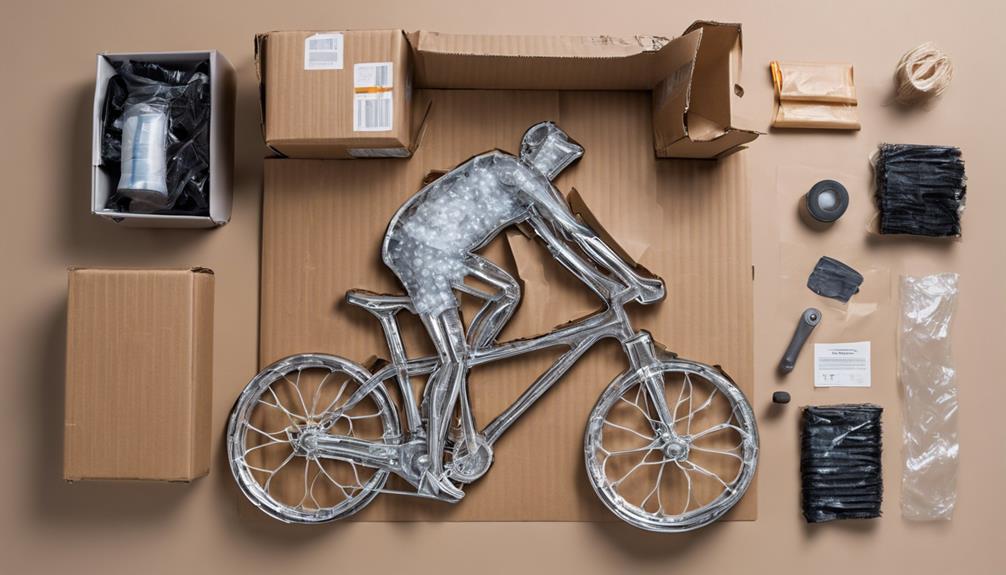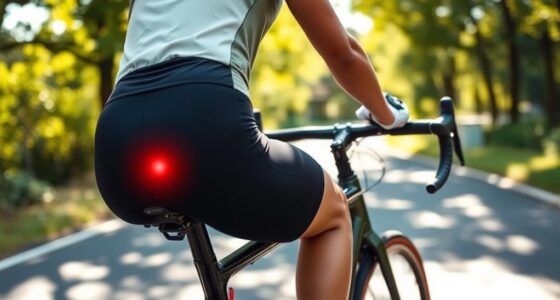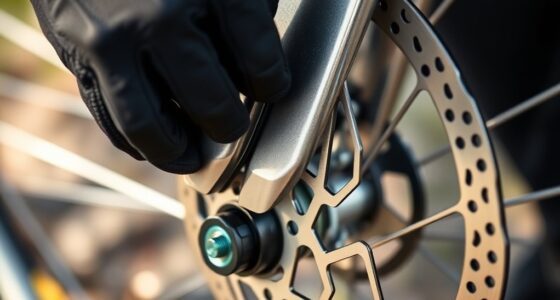When it comes to finding cost-effective ways to ship your bicycle on an airplane, navigating through the options can be like sifting through a maze of possibilities. From comparing specialized bike shipping services to understanding airline transport policies, there are key considerations that can impact both your wallet and your bike's safety.
Let's explore some practical strategies and tips that can help you navigate the world of bike shipping with ease and peace of mind.
Key Takeaways
- Utilize BikeFlights or ShipBikes for affordable bike shipping.
- Check airlines' policies and fees beforehand to avoid surprises.
- Consider lightweight bike cases for convenient air travel.
- Seek local bike shops for free or discounted shipping boxes.
Comparison of Shipping Services
When comparing shipping services for bicycles, consider the various options provided by BikeFlights, UPS, FedEx, and third-party shippers like Shipbikes.com for cost-effective and reliable transportation. BikeFlights stands out for its competitive rates, often on par with shipping giants UPS and FedEx, making it a popular choice among bike shops.
For those seeking convenience, third-party shippers like Shipbikes.com offer door-to-door pick-up services at attractive prices. When it comes to common carriers, USPS, UPS, and FedEx are reliable options for shipping bikes. Additionally, Alaska and Delta Airlines treat bikes as regular luggage, providing a hassle-free way to transport bicycles via air travel.
Whether you prefer the ease of major carriers like UPS or the personalized service of BikeFlights and Shipbikes.com, there are plenty of options available to suit your bike shipping needs.
DIY Bike Packing Tips

To ensure the safe transportation of your bicycle when shipping it yourself, it's crucial to properly disassemble and pack fragile components like the rear derailleur, pedals, and seatpost. When engaging in DIY bike packing, consider the following tips:
- Disassemble Fragile Parts: Take apart delicate components to prevent damage.
- Use Protective Coverings: Wrap fragile parts in foam tubing to provide cushioning.
- Securely Pack Everything: Shake the container to ensure nothing inside moves excessively.
- Consider Professional Packing: If unsure, consult a bike mechanic or opt for professional packing services for added peace of mind.
Lightweight Bike Case Options

As we explore options for lightweight bike cases, it's important to consider models like the Ruster Sports Hen House, Thule RoundTrip Pro XT, Evoc Bike Travel Bag, Scicon Aerocomfort 3.0 TSA, and Biknd Helium V4 for their portability and protective features.
| Bike Case | Weight | Features |
|---|---|---|
| Ruster Sports Hen House | 12 lbs | Lightweight and easy to transport |
| Thule RoundTrip Pro XT | 19 lbs | Ideal for air travel with lightweight protection |
| Evoc Bike Travel Bag | 8.8 lbs | Provides padding while remaining light |
| Scicon Aerocomfort 3.0 TSA | 17 lbs | Balances weight and protection |
| Biknd Helium V4 | 9.9 lbs | Perfect for air travel convenience |
These bike cases offer a range of weights and protective features suitable for air travel. Whether you prioritize lightweight design, ample padding, or overall convenience, there is an option for every cyclist. The Evoc Bike Travel Bag stands out for its low weight and padding, while the Thule RoundTrip Pro XT balances weight and protection effectively. Consider your specific needs when selecting the right bike case for your next air travel adventure.
Airline Bike Transport Policies

In navigating the realm of airline bike transport, understanding the varied policies and fees set by different carriers is crucial for a smooth and hassle-free journey. When it comes to airline bike transport policies, there are a few key points to keep in mind:
- Bike Shipping Fees: Airlines may charge upwards of $150 to check a bike for transport on an airplane.
- Risks of Damage or Loss: It's important to be aware that risks of damage or loss exist when checking a bike as luggage on an airplane.
- Compliance with Policies: Some airlines have specific policies and fees for transporting bikes on their flights, so it's essential to comply with their rules regarding bike packaging and weight limits.
- Advance Checking: Checking with the airline in advance can help avoid surprises and ensure a smooth bike transport process.
Budget-Friendly Bike Shipping Strategies

Navigating the realm of airline bike transport policies involves exploring savvy strategies for cost-effective bike shipping that won't break the bank. When looking to save on shipping costs, utilizing services like BikeFlights or ShipBikes can offer affordable options. For instance, BikeFlights provides ground transport for as low as $62.95, making it a budget-friendly choice. Specialized shippers also offer economical rates, ranging from $62.95 to $83.95 for ground transport.
If you're shipping coast to coast, prices can still remain cost-effective, with services like BikeFlights quoting around $100. Additionally, local bike shops can be a valuable resource for packing and shipping your bike economically. Many shops offer free or discounted boxes, helping you keep costs down. Opting for cost-effective methods like ground transport through specialized bike shippers, such as FedEx and UPS, can further save you money while ensuring your bike reaches its destination safely.
Frequently Asked Questions
What Is the Least Expensive Way to Ship a Bicycle?
Shipping a bicycle economically involves exploring various options like using local bike shops for boxes or negotiating rates with carriers. Researching and leveraging business accounts may allow for better shipping rates, potentially saving money.
How Much Does USPS Charge to Ship a Bike?
We ship bikes via USPS based on distance and weight, costing between $204.95 to $250.50. This option is budget-friendly for long travels. Final charges depend on specifics. USPS Retail Ground handles packages under 70 lbs, making it a convenient choice.
How Do I Ship a Bike With Bike Flights?
Shipping a bike with Bike Flights is hassle-free. Get a quote online, enjoy door-to-door pick-up, and trust major carriers like UPS for reliable service. We've found it convenient, cost-effective, and secure for our bike travels.
Is It Expensive to Fly a Bike?
Flying a bike can be costly, with airlines charging $100-$200. Additional fees for oversized or overweight baggage may apply, making it important to check specific airline policies before booking. Costs vary based on route and status.
Conclusion
In the world of shipping bicycles, finding the right method can feel like navigating a maze. But with a little research and creativity, you can uncover hidden gems that save you time and money.
It's like discovering a secret shortcut on a bike trail – once you know it's there, you'll never look back.
Happy trails and safe travels!









